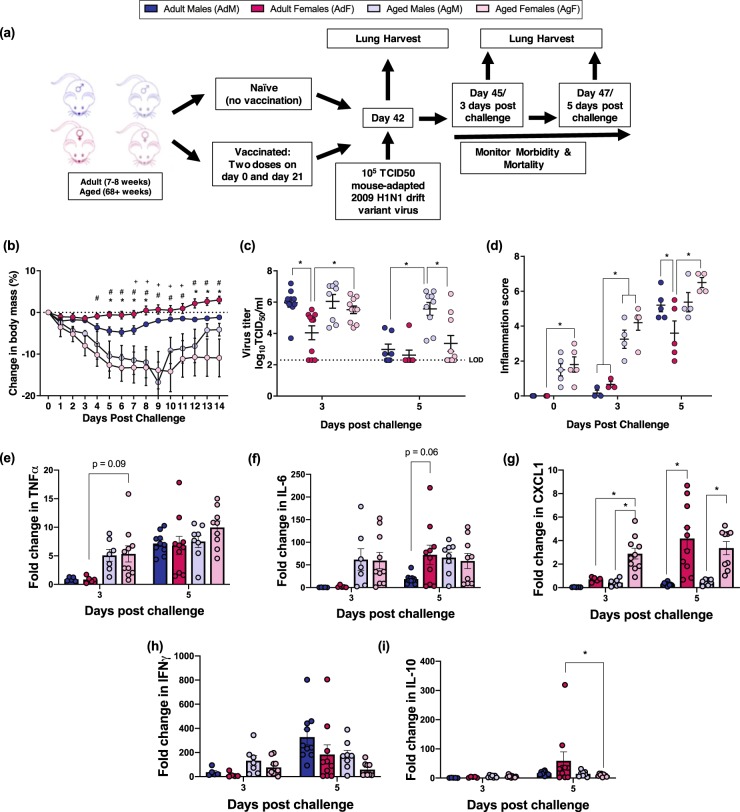Fig. 3.
Sex differences in influenza vaccine-induced protection is more pronounced in adult than aged mice. Adult (8–10 weeks) and aged (68–70 weeks) male (dark or light blue, respectively) and female (dark or light pink, respectively) mice were vaccinated with an inactivated ma2009 H1N1 vaccine and 6 weeks post vaccination challenged with an ma2009 drift variant virus (a). To evaluate morbidity, the percent change in body mass was measured daily for 14 days post challenge (n = 9–10/group) (b). Lung virus titers were measured on days 3 and 5 post challenge (n = 9–10/group) (c), and cumulative inflammation scores from H&E stained lung sections were quantified prior to, and on days 3 and 5 post challenge (d, e) (n = 4–5/group). The concentrations of proinflammatory cytokines were assessed prior to and 3 and 5 days post challenge, and the induction (i.e., fold change) from baseline of TNFα (e), IL-6 (f), CXCL1 (g), IFNγ (h), and IL-10 (i) are presented. Data represents means ± standard error of the mean from two independent replications, and significant differences between groups are denoted by asterisks (*p < 0.05) based on a repeat measures ANOVA (b) or two-way ANOVAs (d–i). Significant differences in morbidity (b) between adult males and females are denoted by asterisks (*), between adult and aged females by pound sign (#), and between adult and aged males by plus sign (+); p < 0.05 based on a repeat measures ANOVA

